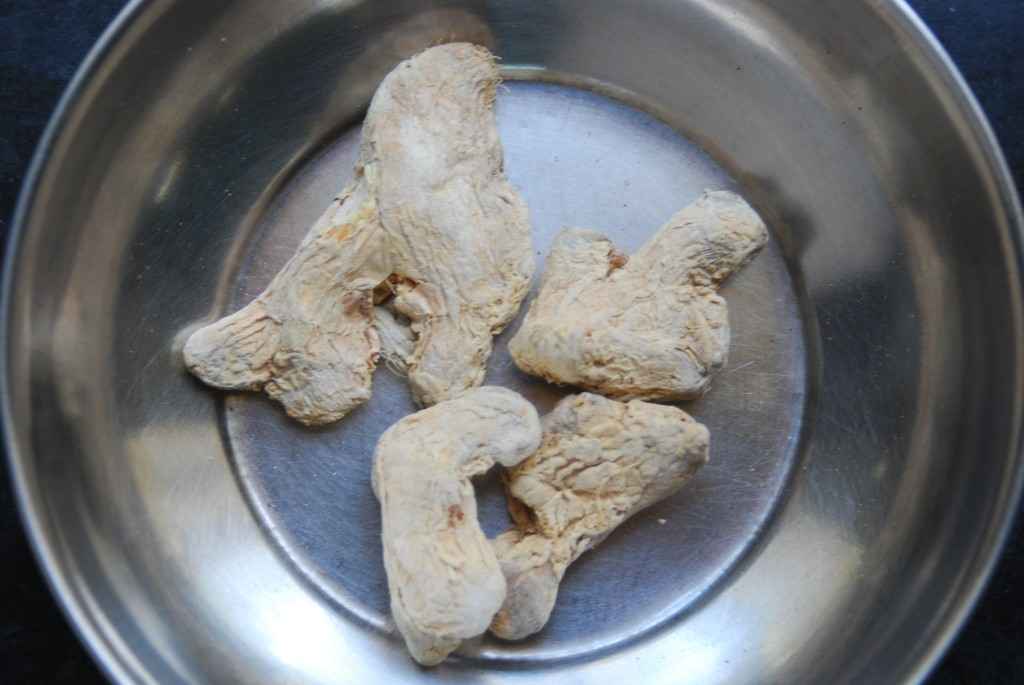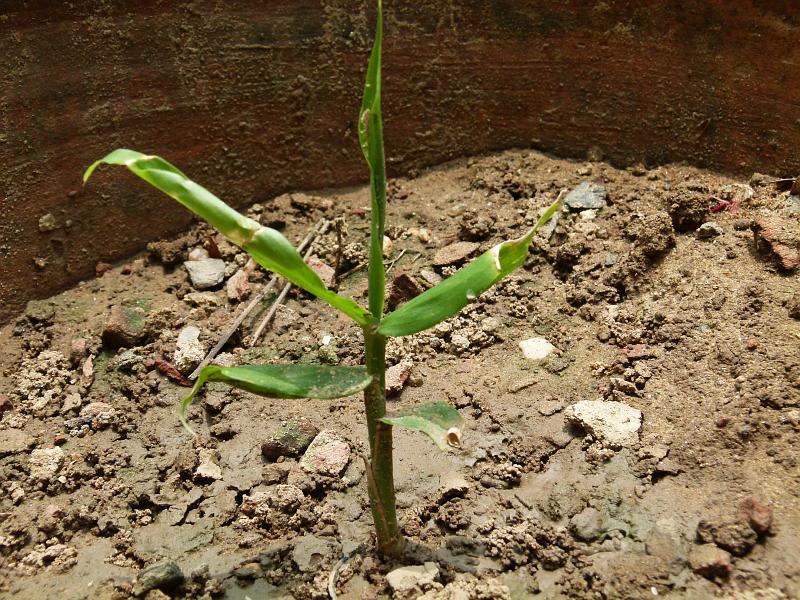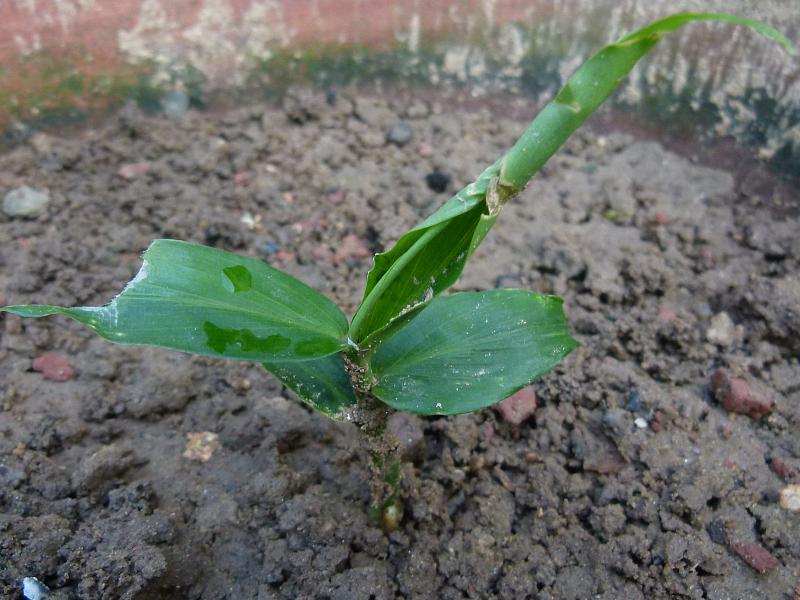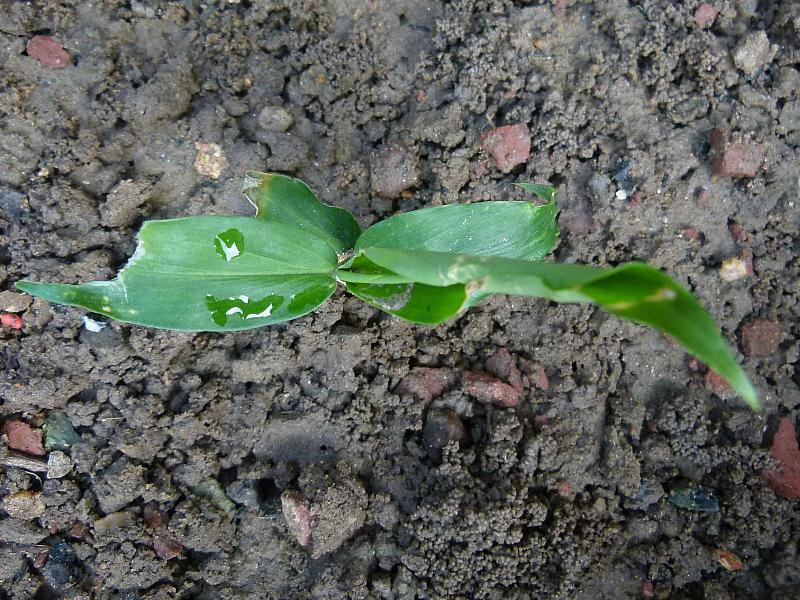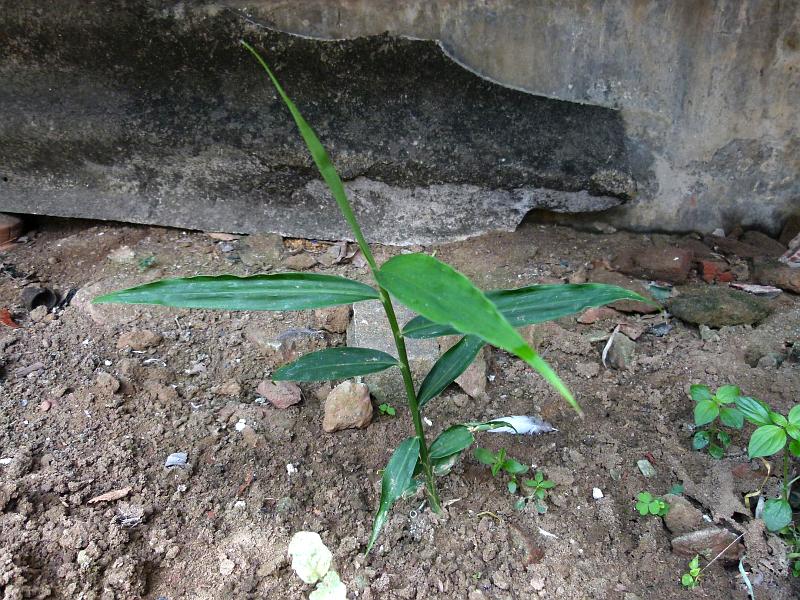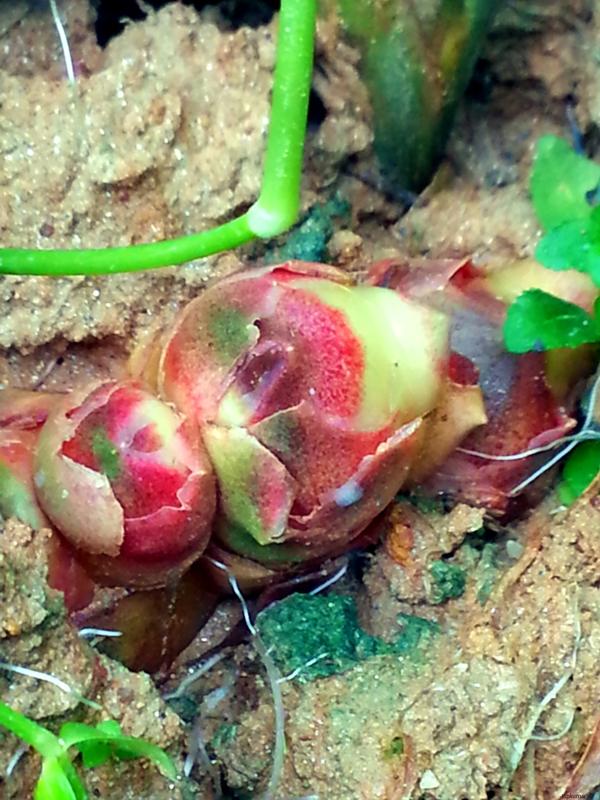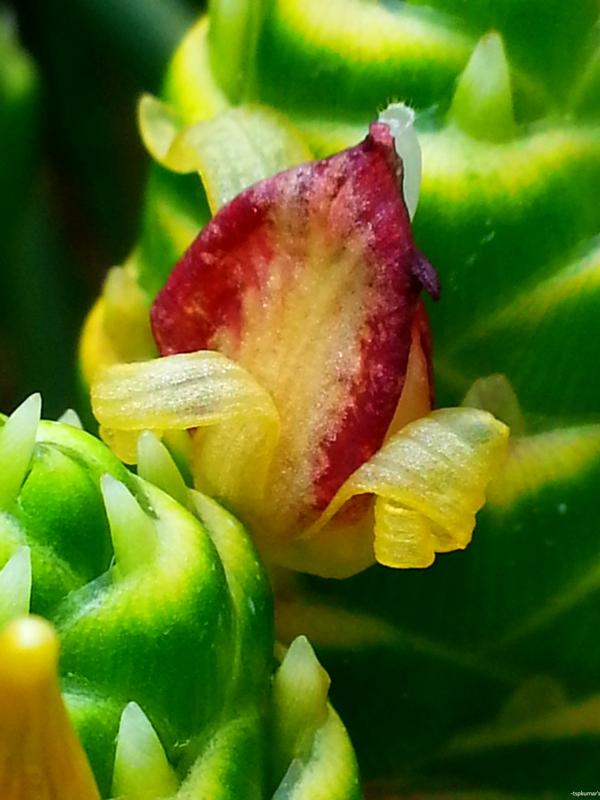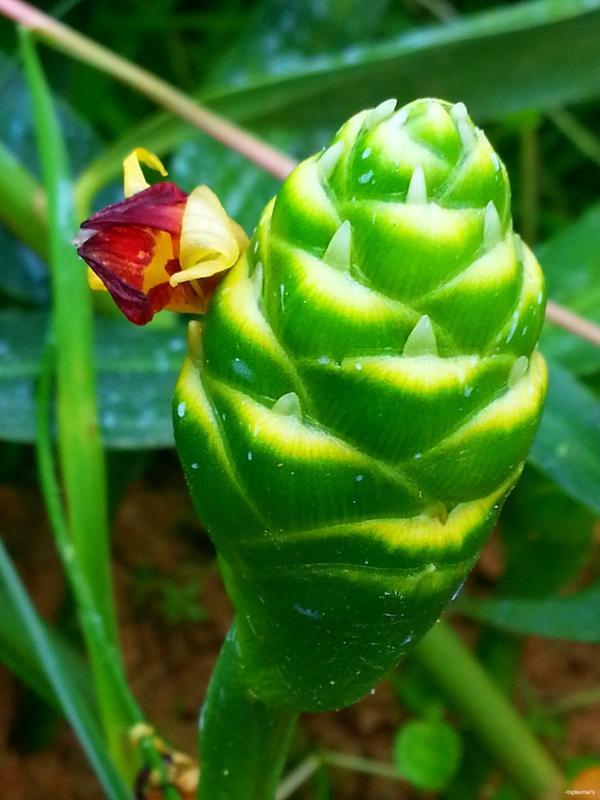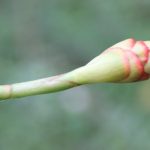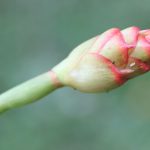|
Zingiber officinale Roscoe, Trans. Linn. Soc. London 8: 348 1807. (Syn: Amomum angustifolium Salisb. [Illegitimate]; Amomum zingiber L.; Amomum zinziba Hill [Spelling variant]; Curcuma longifolia Wall; Zingiber aromaticum Noronha [Invalid]; Zingiber cholmondeleyi (F.M.Bailey) K.Schum.; Zingiber majus Rumph.; Zingiber missionis Wall; Zingiber officinale var. cholmondeleyi F.M.Bailey ……; Zingiber sichuanense Z.Y.Zhu, S.L.Zhang & S.X.Chen; Zingiber zingiber (L.) H.Karst. [Invalid]);
. India to S. Central China: Assam, China South-Central, East Himalaya, India; Introduced into: Andaman Is., Bangladesh, Borneo, Cambodia, Caroline Is., China Southeast, Comoros, Costa Rica, Cuba, Dominican Republic, Gulf of Guinea Is., Hainan, Haiti, Honduras, Leeward Is., Lesser Sunda Is., Madagascar, Malaya, Mauritius, Mexico Southwest, Myanmar, New Guinea, Nicobar Is., Philippines, Puerto Rico, Queensland, Rodrigues, Réunion, Solomon Is., Sri Lanka, Taiwan, Thailand, Trinidad-Tobago, Vanuatu, Vietnam, Windward Is. as per POWO; .
Common name: Ginger • Hindi: अदरक Adrak • Manipuri: শীঙ Shing • Marathi: आले, सुंठ Alha, Aale • Tamil: இஞ்சி Ingee, Inji • Malayalam: ഇഞ്ചി Inchi, Enchi • Telugu: అల్లపు చెట్టు, అల్లము, శొంటి Allam, Allamu, Allamu chettu, Shonti • Kannada: Alla, Shunthi • Bengali: আদা Ada • Oriya: ଅଦା Ada • Urdu: ادرک, آدی Adrak, Adi • Assamese: আদা Ada • Gujarati: આદું Adu, સૂંઠ Sunth • Sanskrit: Adraka • Nepali: अदुवा Aduwa
. The English name ginger comes from French: gingembre, Old English: gingifere, Medieval Latin: gingiber, Greek: zingíberis. (ζιγγίβερις). Ultimately the origin is from the Dravidian word(Tamil) inji ver. The botanical term for root is ver, hence inji root or inji ver.[3]
Ginger produces clusters of white and pink flower buds that bloom into yellow flowers. Because of its aesthetic appeal and the adaptation of the plant to warm climates, ginger is often used as landscaping around subtropical homes. It is a perennial reed-like plant with annual leafy stems, about a meter (3 to 4 feet) tall. Traditionally, the rhizome is gathered when the stalk withers; it is immediately scalded, or washed and scraped, to kill it and prevent sprouting. The fragrant perisperm of Zingiberaceae is used as sweetmeats by Bantu, also as a condiment and sialogogue.[4]
In India and Pakistan, ginger is called adrak in sanskrit, Hindi, Punjabi and Urdu, aad in Maithili, aadi in Bhojpuri, aada in Assamese and Bengali, Adu in Gujarati, hashi shunti (ಹಸಿ ಶುಂಟಿ) in inji (இஞ்சி) in Tamil and Malayalam, inguru (ඉඟුරු) in Sinhalese, alay in Marathi, and aduwa(अदुवा ) in Nepali. Fresh ginger is one of the main spices used for making pulse and lentil curries and other vegetable preparations. Fresh, as well as dried, ginger is used to spice tea and coffee, especially in winter. Ginger powder is also used in certain food preparations, particularly for pregnant or nursing women, the most popular one being katlu which is a mixture of gum resin, ghee, nuts, and sugar. Ginger is also consumed in candied and pickled form. In Bangladesh, ginger is finely chopped or ground into a paste to use as a base for chicken and meat dishes alongside onion and garlic.
(From Wikipedia on 30.8.13)
.
Rhizomatous herbs; rhizome thick, dull yellow. Leafy stem to 60 cm high. Leaves to 25 x 2 cm, elliptic-oblong, acuminate. Peduncles to 30 cm long, erect; spike 3-5 x 3 cm, obovoid; bracts 2.5 x 2 cm, obovate, green. Flowers few; calyx 2 cm long; corolla white, tube small; labellum 3 x 2.5 cm, white, obovate. Flowering and fruiting: September-December
Widely cultivated
Cultivated in Tropical countries
id required : spice 9 : Attachments (1). 6 posts by 5 authors.
I am sending you some spices used for making dry ginger I think ‘Soonth’ (?) from Sachin’s list. I think it’s Zingiber officinale as per the Wikipedia link: http://en.wikipedia.org/wiki/Ginger Dried ginger. Zingiber officinale
Dried ginger is called “Chukku” in Tamil.
nice cultivation Zingiberaceae Fortnight 1 Aug to 15 Aug 2014 : Zingiber officinale : MN02 : 2 posts by 2 authors. 1 image. Araceae, Arecaceae and Zingiberaceae Fortnight: August 1 to 14, 2014 : Zingiberaceae : Zingiber officinale : Nasik : AK-21 : 4 posts by 3 authors. Attachments (2).
Sharing pictures of our commonly used ‘Ginger’ from our Nasik home garden. Zingiberaceae Fortnight ps : Zingiber officinale Roscoe : 3 posts by 2 authors. Attachments (3).
The ID is 100% correct because this is growing in my house! Most varieties of Z. officinale in Indonesia have narrow leaves. Your ginger has broad leaves. Is it variety rubrum? It is the common ginger we buy in the local bazaar. I placed a small rhizome under the ground…… don’t know the variety. The current state of this very individual, transferred from the pot to an empty space. Please share the flowers…will have to wait and watch.. Yes Sir, will have to wait for its flower… will share in this very thread. TSPNOV2015-94-137:Zingiber officinale ( Zingiberaceae) : 2 posts by 2 authors. Attachments (7)
It is my pleasure to share few images of Zingiber officinale (Zingiberaceae) Habit: A rhizomatous herb Habitat: Cultivated Sighting: Mudigere, Chikmagalur, Karnataka, about 900 msl Date: 27-08-2014 loved the habitat pic best of all
Kindly check with Zingiber spectabile. Seems to Zingiber zerumbet Pl send the leaf and rhizome pictures. Is there a chance of it being Zingiber officinale Roscoe ? I guess you are right Z. officinale.
|
Zingiber officinale
Updated on December 24, 2024

